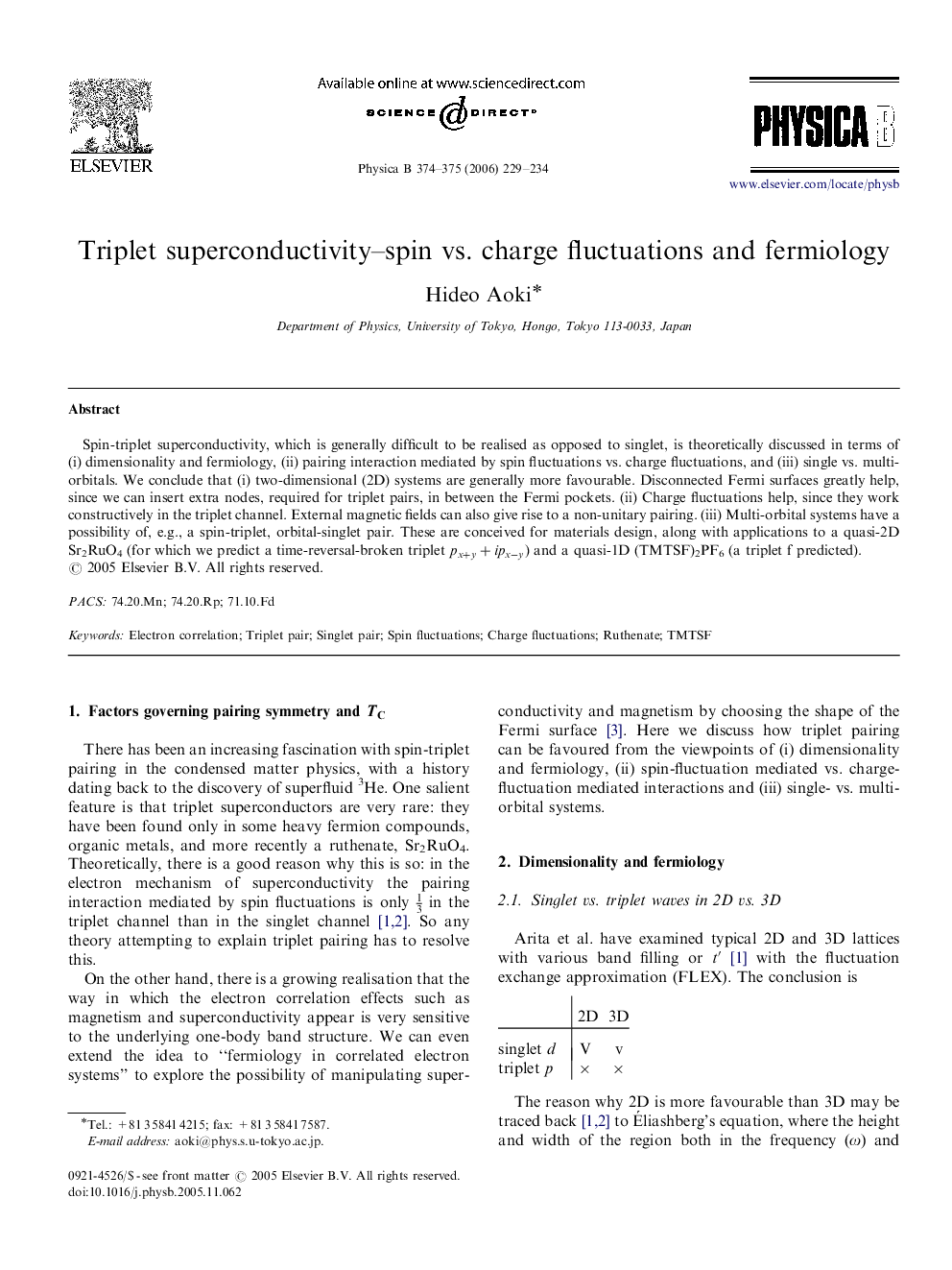| Article ID | Journal | Published Year | Pages | File Type |
|---|---|---|---|---|
| 1816801 | Physica B: Condensed Matter | 2006 | 6 Pages |
Spin-triplet superconductivity, which is generally difficult to be realised as opposed to singlet, is theoretically discussed in terms of (i) dimensionality and fermiology, (ii) pairing interaction mediated by spin fluctuations vs. charge fluctuations, and (iii) single vs. multi-orbitals. We conclude that (i) two-dimensional (2D) systems are generally more favourable. Disconnected Fermi surfaces greatly help, since we can insert extra nodes, required for triplet pairs, in between the Fermi pockets. (ii) Charge fluctuations help, since they work constructively in the triplet channel. External magnetic fields can also give rise to a non-unitary pairing. (iii) Multi-orbital systems have a possibility of, e.g., a spin-triplet, orbital-singlet pair. These are conceived for materials design, along with applications to a quasi-2D Sr2RuO4 (for which we predict a time-reversal-broken triplet px+y+ipx-ypx+y+ipx-y) and a quasi-1D (TMTSF)2PF6 (a triplet f predicted).
